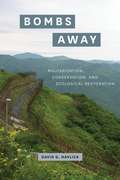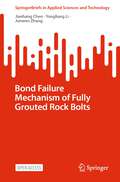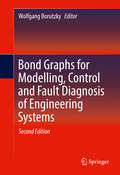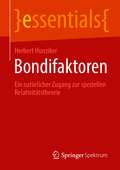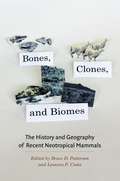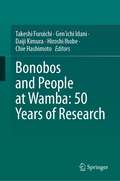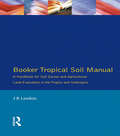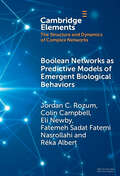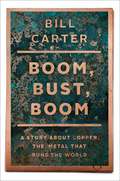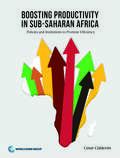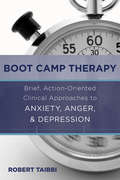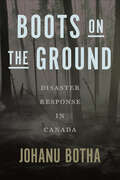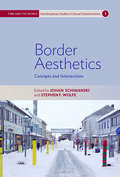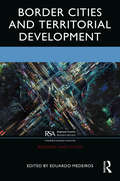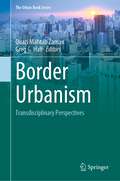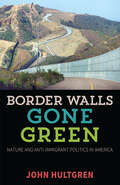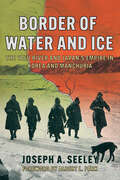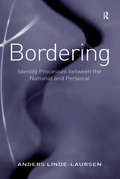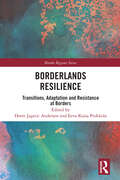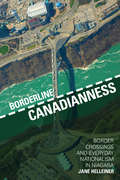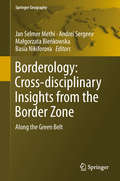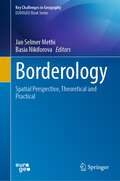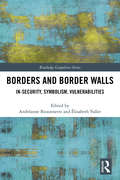- Table View
- List View
Bombs Away: Militarization, Conservation, and Ecological Restoration
by David G. HavlickWhen viewed from space, the Korean Peninsula is crossed by a thin green ribbon. On the ground, its mix of dense vegetation and cleared borderlands serves as home to dozens of species that are extinct or endangered elsewhere on the peninsula. This is Korea’s demilitarized zone—one of the most dangerous places on earth for humans, and paradoxically one of the safest for wildlife. Although this zone was not intentionally created for conservation, across the globe hundreds of millions of acres of former military zones and bases are being converted to restoration areas, refuges, and conservation lands. David G. Havlick has traveled the world visiting these spaces of military-to-wildlife transition, and in Bombs Away he explores both the challenges—physical, historical, and cultural—and fascinating ecological possibilities of military site conversions. Looking at particular international sites of transition—from Indiana’s Big Oaks National Wildlife Refuge to Cold War remnants along the former Iron Curtain—Havlick argues that these new frontiers of conservation must accomplish seemingly antithetical aims: rebuilding and protecting ecosystems, or restoring life, while also commemorating the historical and cultural legacies of warfare and militarization. Developing these ideas further, he shows that despite the ecological devastation often wrought by military testing and training, these activities need not be inconsistent with environmental goals, and in some cases can even complement them—a concept he calls ecological militarization. A profound, clear explication of landscapes both fraught and fecund, marked by death but also reservoirs of life, Bombs Away shows us how “military activities, conservation goals, and ecological restoration efforts are made to work together to create new kinds of places and new conceptions of place.”
Bond Failure Mechanism of Fully Grouted Rock Bolts (SpringerBriefs in Applied Sciences and Technology)
by Junwen Zhang Jianhang Chen Yongliang LiThe purpose of writing this book is to provide the latest research findings in ground control techniques in mining engineering, especially the rock bolting techniques. Since rock bolts are widely used in mining engineering and civil engineering, they are significant in guaranteeing the safety of underground openings. However, instability issues still occur with the rock bolting technique. Therefore, it is valuable to understand the exact load transfer mechanism of rock bolts. This book summarised the recent research work regarding rock bolting conducted by the authors. It is valuable for the readers to fully understand the reinforcing mechanism of fully grouted rock bolts. This book focuses on the bond failure mode of fully grouted rock bolts, which is the most widely encountered failure mode in rock bolting. Different investigation approaches are used in this book, including numerical simulation, analytical modelling and experimental tests. Therefore, this book conducts a comprehensive study to reveal the bond failure process of fully grouted rock bolts. Moreover, it reveals the corresponding bond failure mechanism. Therefore, it helps the reads to fully understand the bond failure mechanism of rock bolting. Moreover, it helps the readers to develop new approaches and methods to prevent failure of the rock bolting system.This is an open access book.
Bond Graphs for Modelling, Control and Fault Diagnosis of Engineering Systems
by Wolfgang BorutzkyThis book presents theory and latest application work in Bond Graph methodology with a focus on: * Hybrid dynamical system models, * Model-based fault diagnosis, model-based fault tolerant control, fault prognosis * and also addresses * Open thermodynamic systems with compressible fluid flow, * Distributed parameter models of mechanical subsystems. In addition, the book covers various applications of current interest ranging from motorised wheelchairs, in-vivo surgery robots, walking machines to wind-turbines. The up-to-date presentation has been made possible by experts who are active members of the worldwide bond graph modelling community. This book is the completely revised 2nd edition of the 2011 Springer compilation text titled Bond Graph Modelling of Engineering Systems - Theory, Applications and Software Support. It extends the presentation of theory and applications of graph methodology by new developments and latest research results. Like the first edition, this book addresses readers in academia as well as practitioners in industry and invites experts in related fields to consider the potential and the state-of-the-art of bond graph modelling.
Bondifaktoren: Ein natürlicher Zugang zur speziellen Relativitätstheorie (essentials)
by Herbert HunzikerObwohl Albert Einstein die spezielle Relativitätstheorie vor mehr als hundert Jahren verfasst hat, ist ihre Vermittlung bis heute eine Herausforderung geblieben. Die dabei auftretenden Schwierigkeiten sind nicht mathematischer Art, sie sind vielmehr darin begründet, dass vertraute Vorstellungen über Raum und Zeit aufzugeben sind. So etwa gilt es zu akzeptieren, dass die zeitliche Reihenfolge von Ereignissen nicht absolut, sondern gemäss Einstein beobachterabhängig ist. Es darf deshalb als Glücksfall betrachtet werden, dass Hermann Bondi in den sechziger Jahren des vorigen Jahrhunderts einen Zugang zur SRT beschrieben hat, der auf einer ausgesprochen intuitiv geprägten Begriffsbildung basiert. In der vorliegenden Schrift wird dieser Zugang dargestellt und erweitert.
Bones, Clones, and Biomes: The History and Geography of Recent Neotropical Mammals
by Bruce D. Patterson Leonora P. CostaAs explorers and scientists have known for decades, the Neotropics harbor a fantastic array of our planet’s mammalian diversity, from capybaras and capuchins to maned wolves and mouse opossums to sloths and sakis. This biological bounty can be attributed partly to the striking diversity of Neotropical landscapes and climates and partly to a series of continental connections that permitted intermittent faunal exchanges with Africa, Antarctica, Australia, and North America. Thus, to comprehend the development of modern Neotropical mammal faunas requires not only mastery of the Neotropics’ substantial diversity, but also knowledge of mammalian lineages and landscapes dating back to the Mesozoic. Bones, Clones, and Biomes offers just that—an exploration of the development and relationships of the modern mammal fauna through a series of studies that encompass the last 100 million years and both Central and South America. This work serves as a complement to more taxonomically driven works, providing for readers the long geologic and biogeographic contexts that undergird the abundance and diversity of Neotropical mammals. Rather than documenting diversity or distribution, this collection traverses the patterns that the distributions and relationships across mammal species convey, bringing together for the first time geology, paleobiology, systematics, mammalogy, and biogeography. Of critical importance is the book’s utility for current conservation and management programs, part of a rapidly rising conservation paleobiology initiative.
Bonobos and People at Wamba: 50 Years of Research
by Takeshi Furuichi Gen'Ichi Idani Daiji Kimura Hiroshi Ihobe Chie HashimotoThis book reviews all the findings about bonobos and the local people of Wamba village in the Luo Scientific Reserve in the Democratic Republic of the Congo over the last 50 years. In 1973, Takayoshi Kano, a Japanese primatologist, traveled across a vast area of the Congo Basin with a bicycle and found Wamba village to be a promising site to start his first studies on wild bonobos. Since then, many researchers from Japan and all over the world have been working at Wamba, now the longest standing study site, to uncover various aspects of the ecology and behavior of this most recently identified great ape species. The researchers study bonobo behaviors and carry out various activities for the conservation of bonobos. They also conduct anthropological studies of local people who live with bonobos and believe them to be distant relatives from the same family, living in the forest. This book is published in commemoration of 2023 marking the 50th year of study. The main chapters are contributed by active researchers studying bonobos and the local people at Wamba. The book also includes contributions from various eminent researchers who have carried out short-term research or have supported research at Wamba, which helps place these studies of bonobos in a broader primatological or anthropological perspective. This book will be a useful resource for professional researchers in primatology and anthropology, as well as graduate or undergraduate students interested in these research fields.
Booker Tropical Soil Manual: A Handbook for Soil Survey and Agricultural Land Evaluation in the Tropics and Subtropics
by J.R. LandonFirst published in 1991. This is a more portable version of the Booker Tropical Soil Manual, in which the format (and weight) of the first edition have been reduced whilst retaining as much as possible of the original clarity. It also includes new content and appendices that cover the revised FAO publications on soil classification and on water quality for agriculture.
Boolean Networks as Predictive Models of Emergent Biological Behaviors (Elements in the Structure and Dynamics of Complex Networks)
by Jordan C. Rozum Colin Campbell Eli Newby Fatemeh Sadat Nasrollahi Réka AlbertInteracting biological systems at all organizational levels display emergent behavior. Modeling these systems is made challenging by the number and variety of biological components and interactions – from molecules in gene regulatory networks to species in ecological networks – and the often-incomplete state of system knowledge, such as the unknown values of kinetic parameters for biochemical reactions. Boolean networks have emerged as a powerful tool for modeling these systems. This Element provides a methodological overview of Boolean network models of biological systems. After a brief introduction, the authors describe the process of building, analyzing, and validating a Boolean model. They then present the use of the model to make predictions about the system's response to perturbations and about how to control its behavior. The Element emphasizes the interplay between structural and dynamical properties of Boolean networks and illustrates them in three case studies from disparate levels of biological organization.
Boom!
by Howard GutnerShort book about volcanoes. It describes how volcanoes are created and what they do. Illustrations are described.
Boom, Bust, Boom: A Story About Copper, the Metal that Runs the World
by Bill CarterFrom “a first-rate writer in the fascinating tradition of Junger and Krakauer” (Jim Harrison, author of Legends of the Fall), a sweeping account of civilization’s complete dependence on copper and what it all means for people, nature, and the global economy.A SWEEPING ACCOUNT OF CIVILIZATION’S COMPLETE DEPENDENCE ON COPPER AND WHAT IT MEANS FOR PEOPLE, NATURE, AND OUR GLOBAL ECONOMY COPPER is a miraculous and contradictory metal, essential to nearly every human enterprise. For most of recorded history, this remarkably pliable and sturdy substance has proven invaluable: not only did the ancient Romans build their empire on mining copper but Christopher Columbus protected his ships from rot by lining their hulls with it. Today, the metal can be found in every house, car, airplane, cell phone, computer, and home appliance the world over, including in all the new, so-called green technologies. Yet the history of copper extraction and our present relationship with the metal are fraught with profound difficulties. Copper mining causes irrevocable damage to the Earth, releasing arsenic, cyanide, sulfuric acid, and other deadly pollutants into the air and water. And the mines themselves have significant effects on the economies and wellbeing of the communities where they are located. With Red Summer and Fools Rush In, Bill Carter has earned a reputation as an on-the-ground journalist adept at connecting the local elements of a story to its largest consequences. Carter does this again—and brilliantly—in Boom, Bust, Boom, exploring in an entertaining and fact-rich narrative the very human dimension of copper extraction and the colossal implications the industry has for every one of us. Starting in his own backyard in the old mining town of Bisbee, Arizona—where he discovers that the dirt in his garden contains double the acceptable level of arsenic—Bill Carter follows the story of copper to the controversial Grasberg copper mine in Indonesia; to the “ring” at the London Metal Exchange, where a select group of traders buy and sell enormous amounts of the metal; and to an Alaskan salmon run threatened by mining. Boom, Bust, Boom is a highly readable account—part social history, part mining-town exploration, and part environmental investigation. Page by page, Carter blends the personal and the international in a narrative that helps us understand the paradoxical relationship we have with a substance whose necessity to civilization costs the environment and the people who mine it dearly. The result is a work of first-rate journalism that fascinates on every level.
Boosting Productivity in Sub-Saharan Africa: Policies and Institutions to Promote Efficiency
by Cesar CalderonThe rising concentration of extreme poverty in Sub-Saharan Africa over the past quarter century can be attributed to the fact that economic growth has been slow, productivity levels are still low, and growth has not been inclusive enough to put a big dent in poverty. What explains the dismal performance on labor productivity in Sub- Saharan Africa compared with the rest of the developing world? This report argues that first, physical capital is scarce and economic activities in the region have low capital intensity relative to other regions. Second, although human capital levels were relatively similar in Sub-Saharan Africa relative to a group of East Asian Pacific countries in 1960, insufficient investment and poor outcomes led not only to relatively lower levels but also to low quality of human capital. Finally, scarce resources, compounded by the inefficiencies in their allocation across productive units (with different levels of productivity), translated into low aggregate labor productivity. Sub-Saharan Africa needs policies to boost productivity across allsectors of economic activity, especially in those sectors in which most poor people make their living. The region needs policies that improve productivity in the agriculture sector, foster rural development, and create jobs for youth who are joining the labor force.
Boot Camp Therapy: Brief, Action-Oriented Clinical Approaches to Anxiety, Anger, & Depression
by Robert TaibbiIncorporating brief therapy with an innovative "boot camp" approach to help clients overcome three of the most prevalent issues in therapy. In some cases long-term therapy that seeks to assess a client's history and gain insight over the course of many sessions isn't always possible. Immediate behavior change and concrete steps to fix the problem at hand are sometimes more practical and desirable. Grounded in a results-oriented brief therapy model, this user-friendly guide presents the author's "boot camp" approach--focusing on a client's immediate behavior, helping them to do things differently, take action, concentrate on process, and use targeted goals and homework to jump-start and motivate them into taking risks and breaking patterns. Following this approach, Taibbi walks readers through session-by-session treatment "maps" for achieving solutions to three of the most common issues in therapy.
Boots on the Ground: Disaster Response in Canada
by Johanu BothaOver the last century, the scale of Canada’s domestic disaster response system has grown significantly due to the country’s increased capacity for emergency management and the rise in natural hazards. However, there has been no systematic assessment of how effectively this multilevel system, which includes all levels of government and the military, has been integrated, and how efficient this system actually is at responding to high-level disasters. Using in-depth archival analysis and interviews with senior military and civilian officials on the inside, Boots on the Ground provides a detailed examination of Canada’s disaster response system. Including policy recommendations focused on the expansion of emergency management networks, the maintenance of Canada’s decentralized emergency management system, and disaster response resources for First Nations communities, Boots on the Ground aims to highlight opportunities to improve Canada’s urgent disaster response. Boots on the Ground offers helpful lessons for students, policy makers, emergency management practitioners, and military officers, ensuring that readers gain concrete insights into the strategic and efficient implementation of disaster response initiatives.
Border Aesthetics: Concepts and Intersections (Time and the World: Interdisciplinary Studies in Cultural Transformations #3)
by Johan Schimanski Stephen F. WolfeFew concepts are as central to understanding the modern world as borders, and the now-thriving field of border studies has already produced a substantial literature analyzing their legal, ideological, geographical, and historical aspects. Such studies have hardly exhausted the subject's conceptual fertility, however, as this pioneering collection on the aesthetics of borders demonstrates. Organized around six key ideas-ecology, imaginary, in/visibility, palimpsest, sovereignty and waiting-the interlocking essays collected here provide theoretical starting points for an aesthetic understanding of borders, developed in detail through interdisciplinary analyses of literature, audio-visual borderscapes, historical and contemporary ecologies, political culture, and migration.
Border Cities and Territorial Development (Regions and Cities)
by Eduardo MedeirosThis monograph analyses the role of border cities in promoting territorial development processes in border regions across the world. It not only embraces the scientific fields of regional and urban studies but also addresses territorial (urban, local, regional) development and planning theories, as well as the effects of development policies applied to border regions in both Europe and North America. In essence, the book offers a full toolkit of border regions' territorial development knowledge and, in particular, advances a range of policy development proposals. It provides a comprehensive introduction to contemporary thinking about how border cities can play a decisive role in boosting territorial development processes in border regions. The book is divided into three parts. Part I presents a theoretical framework on the role of border cities in promoting territorial development and planning in border regions. Part II debates current mainstream policies focusing on supporting border regions and specifically border cities in the EU, the UK, and North America. Finally, Part III presents a wealth of updated knowledge, based on the analysis of several concrete case studies: border cities from both Europe (north, south, east and west) and North America (Canada, the United States, and Mexico). The chapters are written by some of the most renowned authors on the subject, including scholars from several European and North American countries, as well as the secretary generals of three European border regions associations (AEBR, MOT, and CESCI). The book will thoroughly prepare students and provide knowledge to academics and policymakers in the fields of urban and regional planning and development studies, human geography, economic development, EU policies, border regions, and policy impacts.
Border Crossings
by Sneed B. CollardFollow two endangered ocelots as they attempt to cross the border in this powerful picture book about the environmental impact of the Wall.Explore the beauty and biodiversity of our spectacular border area and see how the Wall impacts plants and animals. As two endangered ocelots attempt to cross the border, they face obstacles that drive home the catastrophic effects of the Wall--and the many benefits of keeping the border barrier-free. Powerful storytelling introduces young readers to the wildlife that thrives along the border and urges budding nature buffs to value and protect our environment.
Border Urbanism: Transdisciplinary Perspectives (The Urban Book Series)
by Quazi Mahtab Zaman Greg G. HallBorder Urbanism presents a global array of authors’ research that tackles the perception, interpretation, and nature of borders from a transdisciplinary perspective. The authors examine ways in which borders attempt to define socially, economically, politically, and historically incompatible systems, from micro neighbourhoods to global macro territories, and how this blurs urban order that results in an absence of cohesion. Their analysis of contextual worldwide settings considers the unique issues and the broad scope of forces that shape borders and separate socioeconomic, political, cultural, and historical polarities. The authors consider ways in which the resulting urban border conditions determine the mobility of goods, resources, and people and how these delineations define relationships that influence geopolitical relationships, socioeconomic transactions, and people’s lives at multiple levels. They address the temporal issues defined by a variety of unique urban conditions that result from these lateral thresholds. Each chapter contributes to a critical discourse of the subject of border urbanism and the phenomenon created by separation, demarcation, and segregation as well as by conflict and coexistence. The transdisciplinary approach of Border Urbanism ensures that it will be of interest to individuals across a spectrum of professions and disciplines. Professionals such as urban planners, designers, architects, developers, and civil and environmental engineers and students of these disciplines will be particularly interested as will allied professionals and those not traditionally associated with urbanism; these include artists, sociologists, historians, lawyers, politicians, and civic and government leaders. The authors’ global perspectives, combined with their expertise in environmental, historical, cultural, social, political, and geographic areas, will appeal to anyone interested in border urbanism and its intersection with these areas.
Border Walls Gone Green: Nature and Anti-immigrant Politics in America
by John HultgrenHow is it that self-identified environmental progressives in America can oppose liberalizing immigration policies? Environmentalism is generally assumed to be a commitment of the political left and restrictionism a commitment of the right. As John Hultgren shows, the reality is significantly more complicated. American environmentalists have supported immigration restrictions since the movement first began in the late 1800s, and anti-immigration arguments continue to attract vocal adherents among contemporary mainstream and radical &“greens.&”Border Walls Gone Green seeks to explain these seemingly paradoxical commitments by examining what is actually going on in American debates over the environmental impacts of immigration. It makes the case that nature is increasingly being deployed as a form of &“walling&”—which enables restrictionists to subtly fortify territorial boundaries and identities without having to revert to cultural and racial logics that are unpalatable to the political left. From an environmental point of view, the location of borders makes little sense; the Mexican landscape near most border crossings looks exactly like the landscape on the American side. And the belief that immigrants are somehow using up the nation&’s natural resources and thereby accelerating the degradation of the environment simply does not hold up to scrutiny. So, Hultgren finds, the well-intentioned efforts of environmentalists to &“sustain&” America are also sustaining the idea of the nation-state and in fact serving to reinforce exclusionary forms of political community.How, then, should socially conscious environmentalists proceed? Hultgren demonstrates that close attention to the realities of transnational migration can lead to a different brand of socio-ecological activism—one that could be our only chance to effectively confront the powerful forces producing ecological devastation and social injustice.
Border of Water and Ice: The Yalu River and Japan's Empire in Korea and Manchuria (The Environments of East Asia)
by Joseph A. SeeleyBorder of Water and Ice explores the significance of the Yalu River as a strategic border between Korea and Manchuria (Northeast China) during a period of Japanese imperial expansion into the region. The Yalu's seasonal patterns of freezing, thawing, and flooding shaped colonial efforts to control who and what could cross the border. Joseph A. Seeley shows how the unpredictable movements of water, ice, timber-cutters, anti-Japanese guerrillas, smugglers, and other borderland actors also spilled outside the bounds set by Japanese colonizers, even as imperial border-making reinforced Japan's wider political and economic power. Drawing on archival sources in Japanese, Korean, Chinese, and English, Seeley tells the story of the river and the imperial border haphazardly imposed on its surface from 1905 to 1945 to show how rivers and other nonhuman actors play an active role in border creation and maintenance. Emphasizing the tenuous, environmentally contingent nature of imperial border governance, Border of Water and Ice argues for the importance of understanding history across the different seasons.
Bordering: Identity Processes between the National and Personal
by Anders Linde-LaursenWhat is a border? This seemingly simple question is here answered via a multidisciplinary study of the cultural, geographic and historic existence of borders, and the ways that they have shaped our world. Using the Danish-Swedish border to illustrate the actions of groups and individuals engaged in bordering since the 1600s, this richly theoretical discussion highlights the complexities of political and cultural identity processes. Comparative perspectives are brought together to produce a thoughtful analysis of how such processes function, and of how borders work on both an imagined nationhood and experiential personal level. The author also examines how throughout history people have lived with and influenced or been influenced by borders, why some borders remain uncontested while others repeatedly provoke cross-border conflicts, and how today's bordering processes may be deliberately manipulated.
Borderlands Resilience: Transitions, Adaptation and Resistance at Borders (Border Regions Series)
by Eeva-Kaisa Prokkola Dorte Jagetic AndersenThis book offers new insights into the current, highly complex border transitions taking place at the EU internal and external border areas, as well as globally. It focuses on new frontiers and intersections between borders, borderlands and resilience, developing new understandings of resilience through the prism of borders. The book provides new perspectives into how different groups of people and communities experience, adapt and resist the transitions and uncertainties of border closures and securitization in their everyday and professional lives. The book also provides new methodological guidelines for the study of borders and multi-sited bordering and resilience processes. The book bridges border studies and social scientific resilience research in new and innovative. It will be of interest to students and scholars in geography, political studies, international relations, security studies and anthropology.
Borderline Canadianness: Border Crossings and Everyday Nationalism in Niagara
by Jane HelleinerCanada and the United States share the world's longest international border. For those living in the immediate vicinity of the Canadian side of the border, the events of 9/11 were a turning point in their relationship with their communities, their American neighbours and government officials. Borderline Canadianness offers a unique ethnographic approach to Canadian border life. The accounts of local residents, taken from interviews and press reports in Ontario's Niagara region, demonstrate how borders and everyday nationalism are articulated in complex ways across region, class, race, and gender. Jane Helleiner's examination begins with a focus on the "de-bordering" initiated by NAFTA and concludes with the "re-bordering" as a result of the 9/11 attacks. Her accounts of border life reveals disconnects between elite border projects and the concerns of ordinary citizens as well as differing views on national belonging. Helleiner has produced a work that illuminates the complexities and inequalities of borders and nationalism in a globalized world.
Borderology: Along the Green Belt (Springer Geography)
by Jan Selmer Methi Andrei Sergeev Małgorzata Bieńkowska Basia NikiforovaThis book provides a unique and multifaceted view on and understanding of borders and their manifestations: physical and mental, cultural and geographical, and as a question of life and death. It highlights the Green Belt along the Iron Curtain, which offered a haven for rare species for many decades and, after the Cold War, became a veritable treasure trove for a European network of researchers. A geographical border is something that can be seen, but other borders sometimes have to be crossed to be discovered. The border zone is an arena for development that is not found in any other places. This book focuses on borderology, which became the name of a cross-border study and research program that explores the border zone from multiple perspectives. This cross-disciplinary book will appeal to interested researchers and students from many fields, from philosophy and diplomacy to ecology and geography.
Borderology: Spatial Perspective, Theoretical and Practical (Key Challenges in Geography)
by Jan Selmer Methi Basia NikiforovaThis book develops and establishes knowledge about borderology in the border zone between different countries, cultures, and climatic environment. The content of border and border zone has, during our research, changed from being a physical border between states to different borders and border zones which also include social and mental borders. The COVID-19 pandemic has challenged the concept even more. The expressions “lockdown” and "social distance" indicate such borders that we, a short time ago, had largely not considered in our everyday life. Not only states closed their borders, regions inside a country, and even borders within families were established. “Illegally” passing these borders could crate strong reactions both from the nature by a disease or by the authorities with fees. The pandemic has not only challenged our understanding of borders and border zones, but it has also challenged our understanding of human rights and especially our understanding of what freedom is.
Borders and Border Walls: In-Security, Symbolism, Vulnerabilities (Routledge Geopolitics Series)
by Élisabeth Vallet Andréanne BissonnetteThis book addresses the recent evolution of borderlines around the world as an attempt to control transnational movements with a view to securitization of borders rooted in the need to control mobility and preserve national identities. This book moves beyond physical borders and studies new manifestations of borders such as technological and symbolic walls. It brings together scholars from various academic fields such as geography, political science and Border Studies to examine the various movements, functions and articulations of international borders. It explores two main issues: How international borders have become enforced lines of demarcation and division, reinforcing national identity and impacting national and regional dynamics; and the material and immaterial, discursive and concrete expressions of borders and the impacts of the transformation of bodies into threat to be monitored, as daily lives become sites of border enforcement. Offering multidisciplinary insights on the growing phenomenon of border walls, this book will be of interest to undergraduate and postgraduate students of Border Studies, European Studies, International Relations, Political Geography, and Regional Studies.
